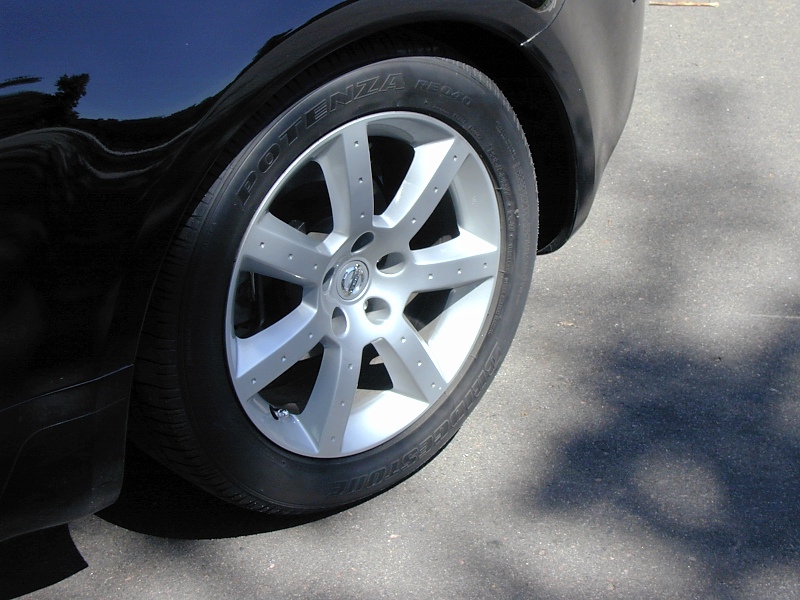
|
B arry's
Tire
Tech
This is a series of articles on the technical aspects of tires, their care and usage.
My primary purpose in these articles is to help people understand tires and thereby reduce the risks we all face every day.
..........and since tires is just about the only thing I know about..........
Please drop me a note if you have a topic you want to see:
Barry@BarrysTireTech.com
|
Original Equipment (OE) Tires:
|
Original Equipment tires are tires that are supplied to the vehicle manufacturer's assembly plant. These tires would be the ones on the vehicle when it comes off the end of the assembly line. This would include the spare - whether it is a minispare, donut, fullsized temporary, or regular tire. Throughout the rest of this article, I will refer to these tires as "OE".
By contrast, I will use the words "Replacement Tires", meaning tires designed specifically for the replacement market. I may also use the words "Replacement Market Tires", or "Aftermarket Tires" to mean the same thing.
And just to be more confusing: In the words "OE tires", I also mean tires that are otherwise identical to those tires coming on new vehicles, but sold in the replacement market. I may refer to these as "Downstream Tires", meaning they are downstream of the point where the OE tires are diverted to the assembly plant.
But I am excluding from "OE", tires that are applied at the vehicle dealership or tires applied by someone other than the vehicle manufacturer - for example: a van conversion company. |
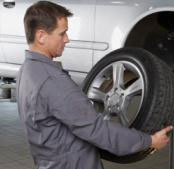
|
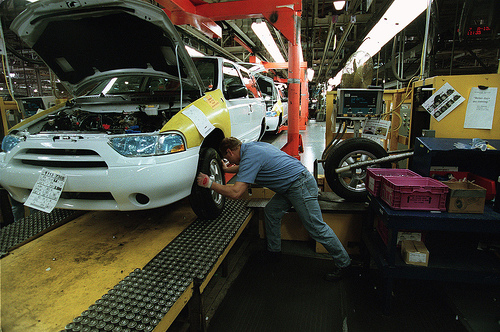
|
Perhaps it would be helpful if I explained how vehicle manufacturers decide what tires to put on their vehicles. This is commonly referred to as a "Qualification".
Before I start let me say that I am thoroughly familiar with the way this was done by a one particular vehicle manufacturer about 15 years ago. I am sure the process has changed slightly, and I am also sure it is different with each vehicle manufacturer, however, every indication I get is that (with some variation, of course) the process is similar regardless of the vehicle manufacturer.
|
|
Vehicle manufacturers have a short list of eligible tire suppliers - usually 3 or 4. In order to get on this short list, each tire manufacturer has to be certified to some level - typically TS16949. This is an international quality system and requires a high level of commitment on the part of the tire manufacturer. It is expensive and difficult to achieve, but if you want to do business with a vehicle manufacturer, it has to be done.
Once a tire manufacturer has achieved this certification, he is graded on everything from on time delivery (not too early / not too late), compliance to packaging requirements (shrinkwrap / bundling / whatever), to the way the tires look (cleanliness, markings, etc)
There are tire manufacturers who do not want the hassle and expense of this certification process - Cooper is notably among them! I point this out to dispel the myth that vehicle manufacturers "shop" for cheap tires. Purchasing agents are constrained to use only approved suppliers.
|
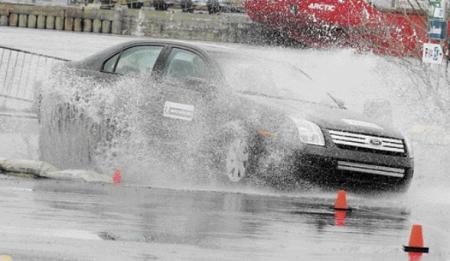 |
|
About 2, or so, years before the start of production, a vehicle engineer publishes a list of requirements for a new tire program. It will start off by specifying the tire size and the usage inflation, and then a list of tests the tire has to pass. The list can be quite long and involved. The requirements can be "stretch" or reasonable - it all depends on what the vehicle designers feel they need.
This list is given to the tire manufacturers - maybe all, maybe just a select few. Keep in mind that most vehicle manufacturers not only have a short list of tire suppliers, but they have made the requirements pretty high to become a supplier. This means that the upfront cost to become a tire supplier is pretty steep and unless you get business, it isn't worth it to keep trying to qualify tires.
Usually the tire size is either existing or just a bit different from what is currently available. That means the tire manufacturer can use a standard construction for the casing. Needless to say, this is almost a given, even if the tire size is a bit unusual. Tire constructions don't vary much within a given category (like a V speed rated all season).
However, the performance requirements are usually quite different than what you would find if the tire manufacturer designed the tire himself. Typically the rolling resistance is significantly lower and treadwear and / or wet traction gets compromised as a result.
I had originally intended to include a copy of one of these lists of requirements, but I was reminded that this list is covered by a confidentiality agreement - and no matter how I disguised the source, I was going to create trouble for myself. So if anyone reading this has a copy, I would appreciate it if you emailed this to me.
Barry@BarrysTireTech.com
|
Once the qualification process has started, every tire supplier starts by submitting data (for tests the tire supplier performs), or tires (for tests the vehicle manufacturer performs). The submissions are usually in order from least costly to most costly. So lab tests are done first (like Rolling Resistance, Force and Moment), followed by short duration on-vehicle tests (like ride and handling, snow traction), and lastly the most expensive tests (like treadwear).
Usually in the early stages of qualifications, each tire supplier will have a handful of potential candidates. Individual candidates will be dropped based on the test results. Towards the end of the program there may be one or two candidates left for each supplier. Rarely does a tire supplier not have a viable candidate - they do everything they can to stay in the running, and tire manufacturers are very resourceful.
|
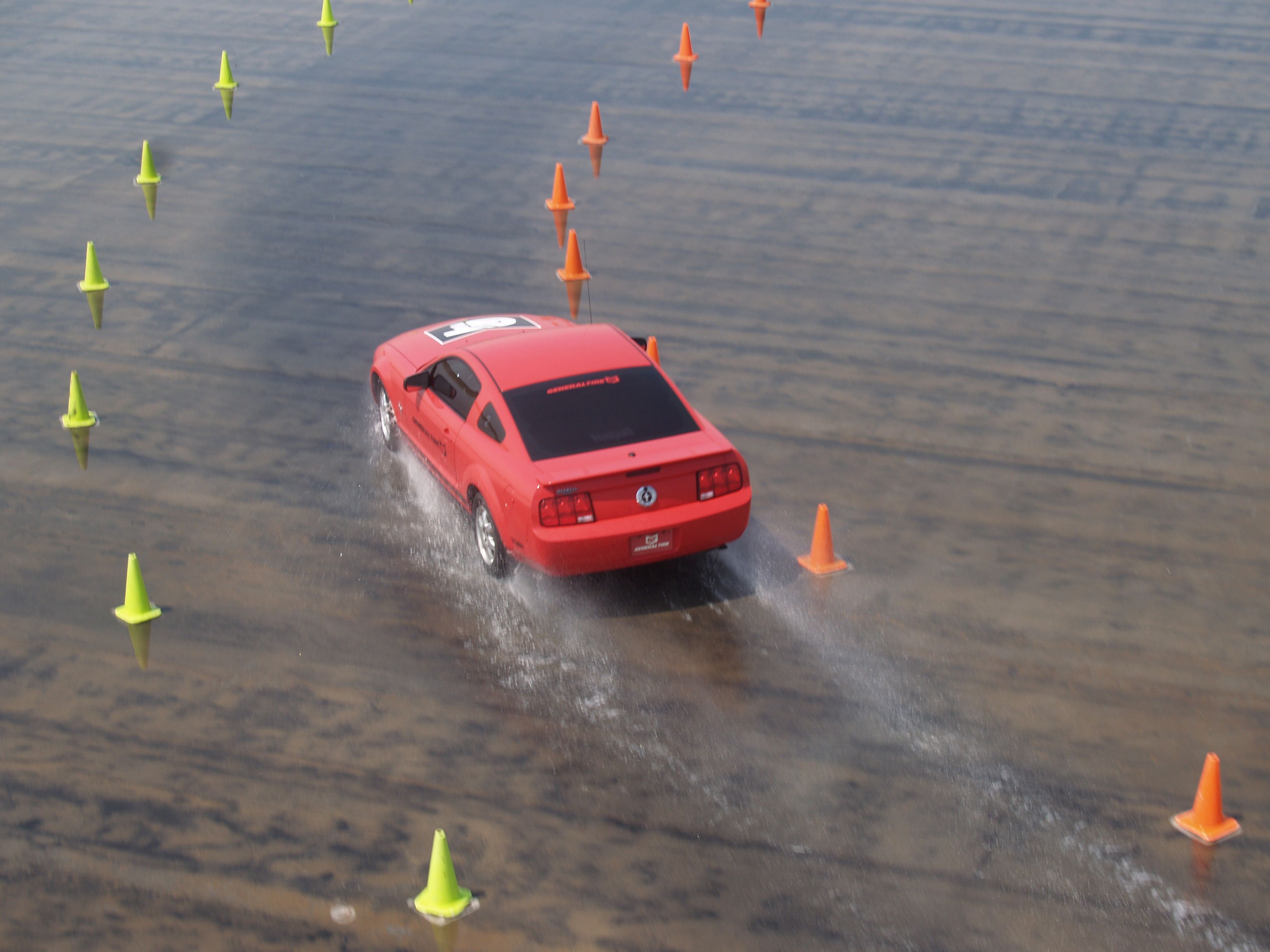
|
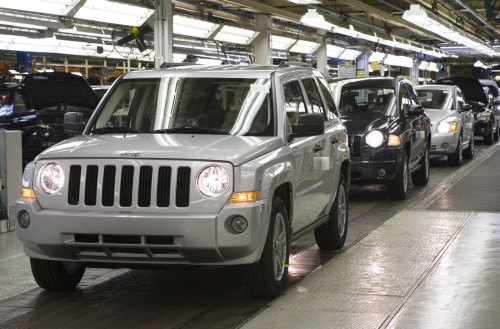
|
In parallel to the engineering qualification is the purchasing qualification. The Purchasing Department at the vehicle manufacturers will be interested in things like tire plant location, shipping, new equipment needed, and other logistical stuff. The price negotiation generally takes place while the tire is still in "development" - meaning that there is a bit of a disconnect between the actual cost of the tire and what the vehicle manufacturer pays for it.
At the end of the process, there is a list of tires submitted to the purchasing agent by the vehicle engineering team with a recommendation for the preferred supplier. The purchasing agent does not have to follow the recommendation, and frequently doesn't. There is so much involved in how this works it's hard to describe, so let me give you an example of why a purchasing agent would not pick the preferred supplier. |
|
I have a list that's a couple of years old of tires supplied to General Motors for one Model Year - 160 different tires, not counting spares. This would include WSW and BSW versions of the same tire, which isn't all that common, but nevertheless the list is staggering.
So in some years it is expected that one tire manufacturer may have a string of successes, and as a result get many recommendations as the preferred supplier. However, their ability to supply tires in the quantity needed is just not there. So purchasing might select vehicle platforms where that particular supplier's presence is an asset and where another supplier's presence isn't a liability. For example, they may think it helps a luxury car to have Brand X on it, where a performance car might be helped by a Brand Y tire. |

|
At this point, I should mention that doing business with a vehicle manufacturer has some good points and some bad points.
On the good side is that the vehicle manufacturer wants a steady stream of the same tire for years on end. That makes setting up a tire factory assembly line very easy and convenient. It also promotes fine tuning the production line. And shipping is easy as well - a regularly scheduled trip from Point A to Point B. |
|
But the bad side of it is that the vehicle manufacturer can be very demanding:
They can demand the tires be packaged in sets. (shrink wrap, banding, boxes, etc.). They can demand the tires arrive no earlier than "X" and no later than "Y". They can demand the tires have stripes - or no markings at all. They can also demand someone visit their facility if they have a problem - even if the problem is caused by themselves. (I can't begin to tell you how many times a tire rep has visited an assembly plant only to find the solution to the problem was something that the assembly plant "broke" and could fix themselves.)
One of the more interesting aspects is that vehicle manufacturers usually have limits for balance and uniformity. Typically these limits are tighter than what works in the replacement market - sometimes much tighter!!
If you don't know about uniformity, read what I wrote up here:
Barry's Tire Tech - Uniformity and Balance
|
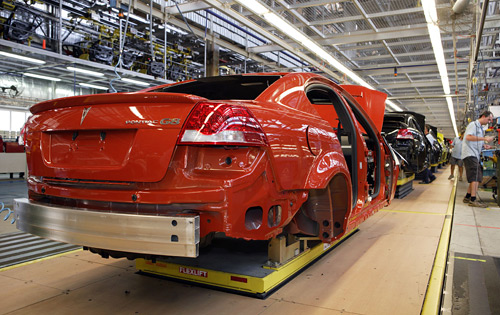 |
|
It is also not unusual for tires that do not meet the vehicle manufacturers limits for balance and uniformity - but meet the tire manufacturers internal limits - to be sold in the replacement market as part of the "downstream".
What the average guy ought to get out of all of this is that it is the vehicle manufacturers who decide what tires get put on their vehicles. They decide how those tires are going to perform - what they are going to do well and what they are going to do poorly. They are also going to buy enough tires to command a good price and make demands - sometimes unreasonable demands.
Bottomline: Vehicle manufacturers do buy at good prices, but that is only because they buy in huge volumes.
Vehicle manufacturers specify the performance of the tires. Many times the performance specified results in a shortcoming in some performance area.
|







